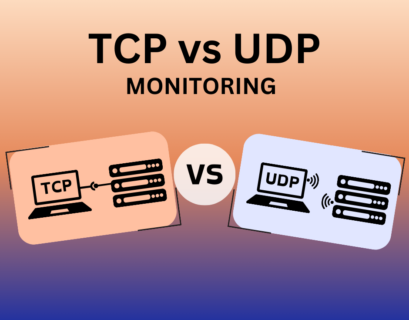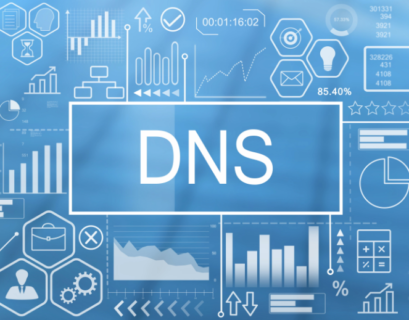The Ransomware attack is one of the most destructive types of cyberthreats today. It targets individuals, businesses, and even governments – locking away critical data until a ransom is paid. To fight it, you first need to understand what it is, how it works, and why it’s so dangerous. Then you can take practical steps to protect yourself. In this guide, we’ll cover everything you need to know, including 10 essential steps to prevent ransomware attacks.
Table of Contents
What is a Ransomware attack?
A ransomware attack is a type of cybercrime where hackers infect a system with malicious software that encrypts files or locks devices. Victims are then forced to pay a ransom – usually in cryptocurrency like Bitcoin – to regain access to their data.
It’s essentially a digital hostage situation: your data is kidnapped, and the attackers hold the decryption key.
What makes ransomware especially concerning is that it targets everyone – from home users to hospitals, schools, financial firms, and critical infrastructure providers.
How does Ransomware attack work?
Ransomware attacks typically unfold in four stages:
- Infection – Attackers gain access through phishing emails, malicious attachments, weak credentials, or unpatched vulnerabilities. Modern attacks even target cloud systems by exploiting Active Directory and hybrid environments.
- Encryption – Once inside, the ransomware encrypts files or locks systems. Some groups steal the data first, using double extortion: pay the ransom, or risk public exposure.
- Ransom Demand – Victims are shown a ransom note, often with a ticking deadline to pressure them into paying.
- Payment (and Maybe Recovery) – Even if a ransom is paid, there’s no guarantee attackers will provide a decryption key – or that they won’t attack again later.
Why is Ransomware so dangerous?
Ransomware isn’t just another malware – it’s one of the most disruptive and destructive threats in cybersecurity. Here’s why:
- Financial Impact: Global ransomware damages are projected to cost billions annually. Ransoms themselves can range from a few hundred dollars to millions.
- Operational Disruption: Hospitals cancel treatments, pipelines shut down fuel supply, and companies lose weeks of productivity.
- Data Theft & Exposure: With double or even triple extortion, sensitive data is stolen and leaked publicly.
- Accessibility for Criminals: Thanks to Ransomware-as-a-Service (RaaS), even low-skilled attackers can launch sophisticated campaigns.
- AI-Driven Automation: New ransomware strains are using AI tools to scan vulnerabilities, craft phishing lures, and even generate malicious scripts.
10 steps to avoid Ransomware
Ransomware may be one of the most damaging cyber threats, but with the right practices, you can greatly reduce the risk of becoming a victim. Here are the most effective steps to follow:
- Keep Software Updated – Regularly patch your operating system, applications, and security tools. Attackers often exploit outdated software.
- Use Strong Security Tools – Install a trusted antivirus or endpoint protection solution that can detect and block ransomware early.
- Enable Multi-Factor Authentication (MFA) – Protect accounts with MFA so stolen passwords alone won’t give attackers access.
- Be Cautious With Emails and Links – Avoid clicking on suspicious links or opening unexpected attachments – most ransomware infections start with phishing. Phishing emails often redirect victims through malicious domains. Using a DNS firewall adds another layer of defense, preventing employees or home users from reaching dangerous sites even if they click a bad link.
- DNS Email Security – Phishing emails are one of the main ways ransomware spreads. Setting up SPF, DKIM, and DMARC DNS records helps stop attackers from spoofing your domain, reducing the risk of employees clicking on malicious links or attachments.
- Back Up Your Data – Maintain regular, offline or cloud backups. Ensure backups are secured and tested so you can restore quickly. Many organizations now use cloud-based DNS management and hosting to support their backup and recovery plans. Reliable DNS ensures that even during an incident, your services can be quickly redirected or restored with minimal downtime.
- Limit User Privileges – Give employees access only to the files and systems they need. This reduces the spread if one account is compromised.
- Educate and Train Staff – Awareness is key. Employees should know how to spot phishing attempts and report suspicious activity immediately.
- Have an Incident Response Plan – Prepare in advance. Know who to call, how to isolate infected systems, and how to recover from backups.
- Monitor and Detect Threats Early – Use intrusion detection systems (IDS) and endpoint monitoring to spot unusual behavior before it escalates.
Suggest: What is a Monitoring service?
Real-World Ransomware attacks
Looking at major ransomware incidents over the years helps us understand how these attacks have evolved. Here are some of the most notable cases, organized by year:
2021 – JBS Foods
Just weeks later in June 2021, JBS Foods, the world’s largest meat processor, suffered a ransomware attack that disrupted operations in the U.S., Canada, and Australia. JBS paid $11 million to the attackers, underscoring how global supply chains can be disrupted by cybercrime.
2023 – British Library
In late 2023, the British Library was targeted by the Rhysida ransomware gang. Attackers demanded 20 BTC (worth around $600,000 at the time). When the ransom wasn’t paid, the criminals leaked 600 GB of sensitive data online, including staff and user records. The attack disrupted digital services and highlighted risks for cultural institutions.
2024 – Change Healthcare
In February 2024, the BlackCat (ALPHV) ransomware halted claims processing for around half of U.S. medical insurance claims through its attack on Change Healthcare. UnitedHealth Group reportedly paid a $22 million ransom, with total damages escalating into the hundreds of millions.
2025 – NASCAR
In April 2025, NASCAR suffered a ransomware incident by Medusa, resulting in the theft of fans’ personal data, including Social Security numbers. A $4 million ransom was demanded, with NASCAR offering credit monitoring and working with experts to secure systems.
Conclusion
Ransomware isn’t going away anytime soon. If anything, attacks are getting smarter, faster, and harder to stop. The big cases we’ve seen in recent years are just a glimpse of what’s ahead. That’s why it’s so important to take prevention seriously now – keeping software updated, training people to spot risks, and having a plan ready if the worst happens. The reality is simple: the more prepared we are today, the safer we’ll be from tomorrow’s ransomware threats.






